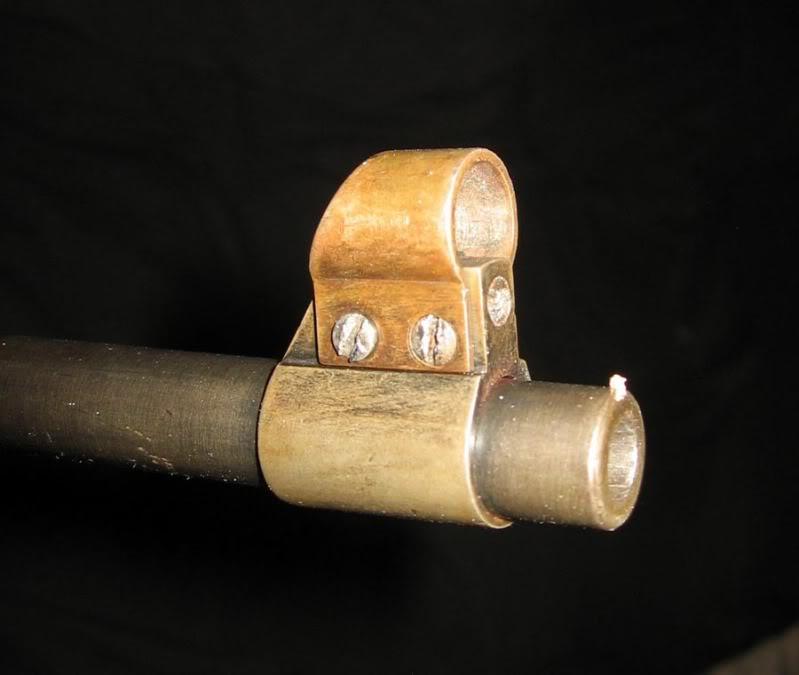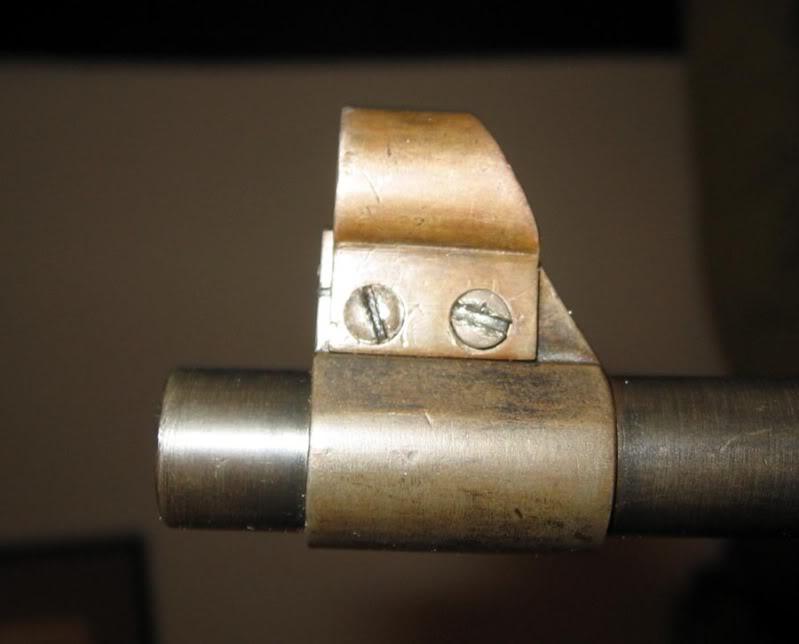-
FREE MEMBER
NO Posting or PM's Allowed

Last edited by Mav-E; 09-16-2010 at 12:15 AM.
-
09-13-2010 02:51 PM
# ADS
Friends and Sponsors

-
Advisory Panel


Pity about the heavy sanding job, but you have the handguards and enough wood past the band that a suitable piece could be scarfed in and a front band fitted.
“There are invisible rulers who control the destinies of millions. It is not generally realized to what extent the words and actions of our most influential public men are dictated by shrewd persons operating behind the scenes.”
Edward Bernays, 1928
Much changes, much remains the same. 
-
-
Advisory Panel


This is a late Mark II rifle. These were used for training the CEF before it went overseas at the beginning of the Great War because the Mark III was just entering production. As Mark III rifles became available, these were shunted off to new formations, resulting in a variety of formation stamps being applied, one after the other, each Armourer cancelling the markings of the previous Battalion. This rifle has had at least THREE sets of Battalion stamps cancelled and somebody even cancelled part of the serial number!
I have been thinking recently on Ultra-violet light (so-called "black light"). It can show up postage-stamp forgeries and even filled, repaired and joined papers like nothing else...... and paper is just ground-up wood. I am thinking that a UV source could be helpful for showing up sanded-out markings on wood, just so long as the sanding was not too terribly overenthusiastic. Might be worth a try. There are people here who can identify the various formations, regiments and so forth for you and who will be happy to help. This rifle would seem to be a prime candidate for such treatment, I would think. "Black-light" bulbs sell for from about a dollar, up to a few dollars only. Worth a try, I would think.
As Surpmil has pointed out already, this rifle would be a prime candidate for a proper restoration, requiring only a couple of parts and some very careful woodwork.
This one is a prize.
As to the front sight, can you give us a close-up photo? I would have to compare it with the ones I have here.
Hope this is some help. Very Nice Toy, friend!
-
-
Legacy Member

+1 to Smellie's suggestion about UV light. I was able to pull up some of the marks on a badly-sportered, heavily sanded and very grimy Mk II using a UV penlight. It's definitely worth a try.
And I would also agree that you've got a rifle that's worthy of putting back into full-military trim. Good on you for saving one from an uncertain future. 
-
-
FREE MEMBER
NO Posting or PM's Allowed

-
Legacy Member

Looking again at your original post, and the markings on the (rifle's) butt, I see the rifle is a 3* (model variation)
Not sure if you're in the U.S. or not, but have a look under the pistol grip on the bottom of the rifle. If there's any sign of a "U.S" stamp and/or the U.S. "flaming bomb" ordnance stamp, you have one of the 20,000 Ross Mk IIs shipped south from Canada and used as training rifles.
and used as training rifles.
-
-
FREE MEMBER
NO Posting or PM's Allowed

There are no markings on the underside of the stock. I tried the UV light and a little Photoshop. This is the best I could get.
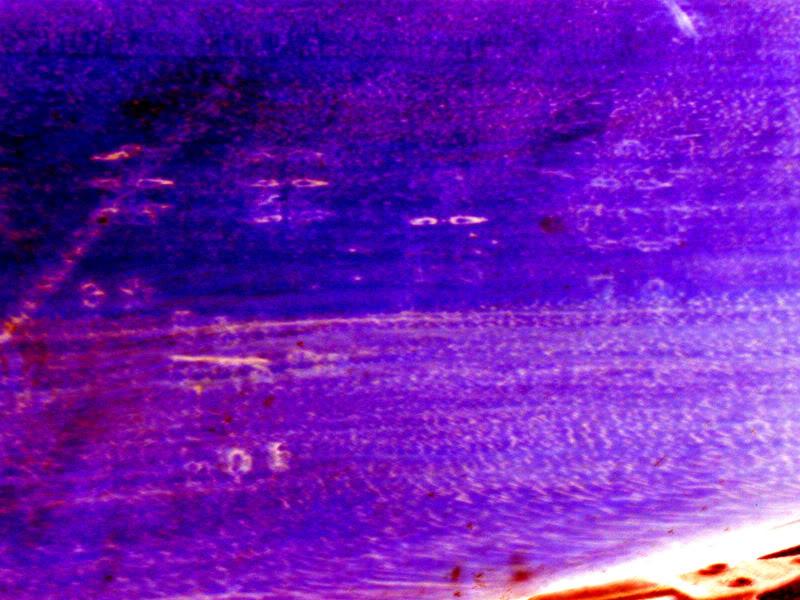
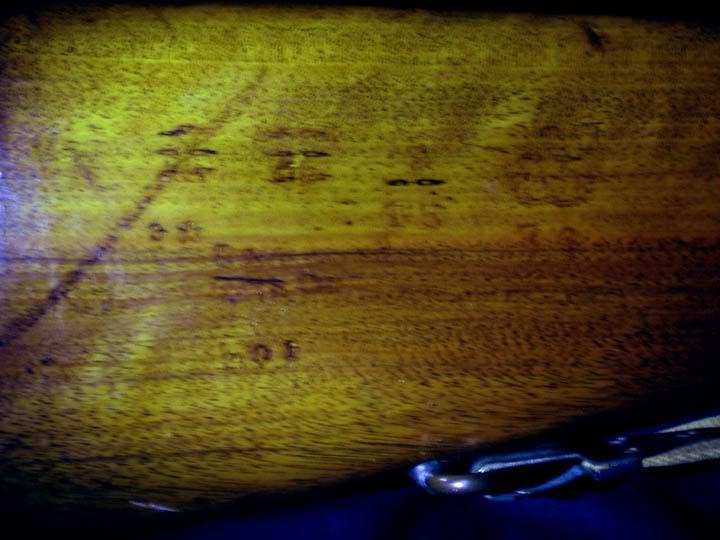
I would still appreciate any help on the front sight removal. I would like to use it for hunting season.
Thanks, Mav-E
-
FREE MEMBER
NO Posting or PM's Allowed

Unit Markings
If you look above the 3*, you will see three cancellation marks (looks like an aeroplane propeller). There are three to the right of that one, and one cancellation mark on the far right. The top number over the single cancellation mark looks like a 2 or 3, and the bottom number is a 15. Because this number is not cancelled out, this is the last unit to be issued this rifle. If this is correct, it would appear that this rifle was last issued to the 2nd. or 3rd. Battalion, CEF, at Valcartier, Quebec, before October 3, 1914, and was the 15th. rifle they received.
The 2nd. Battalion was the Eastern Ontario Battalion, and was composed of members of the Governor Generals Foot Guards, the 16th. Prince Edward Regiment, the 40th. Northumberland Regiment, the 41st. Brockville Rifles, and the 42nd. Lanark and Renfrew Regiment plus other men.
The third Battalion was mostly men from the Toronto Regiment. Both Battalions were issued Ross Military Mark III (M-10) rifles before going overseas with the first Canadian Contingent.
Contingent.
.
 Information
Information














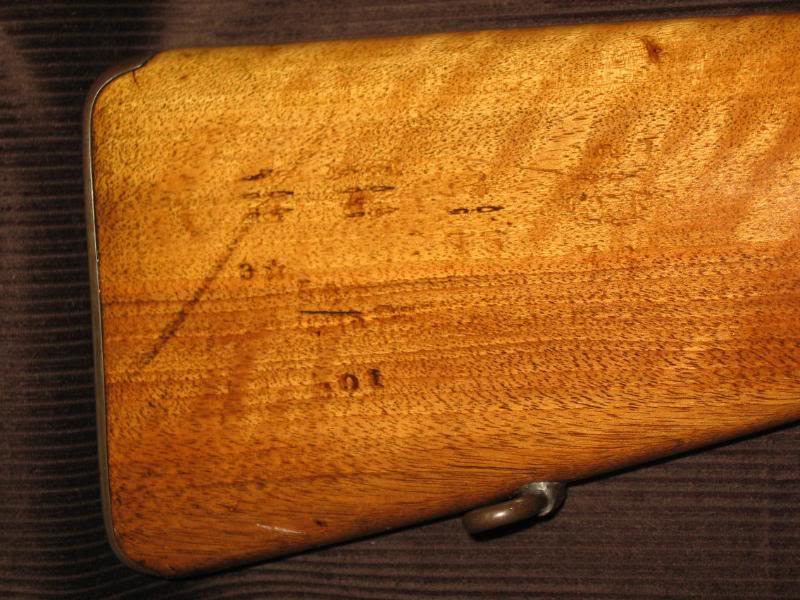
 Register To Reply
Register To Reply









